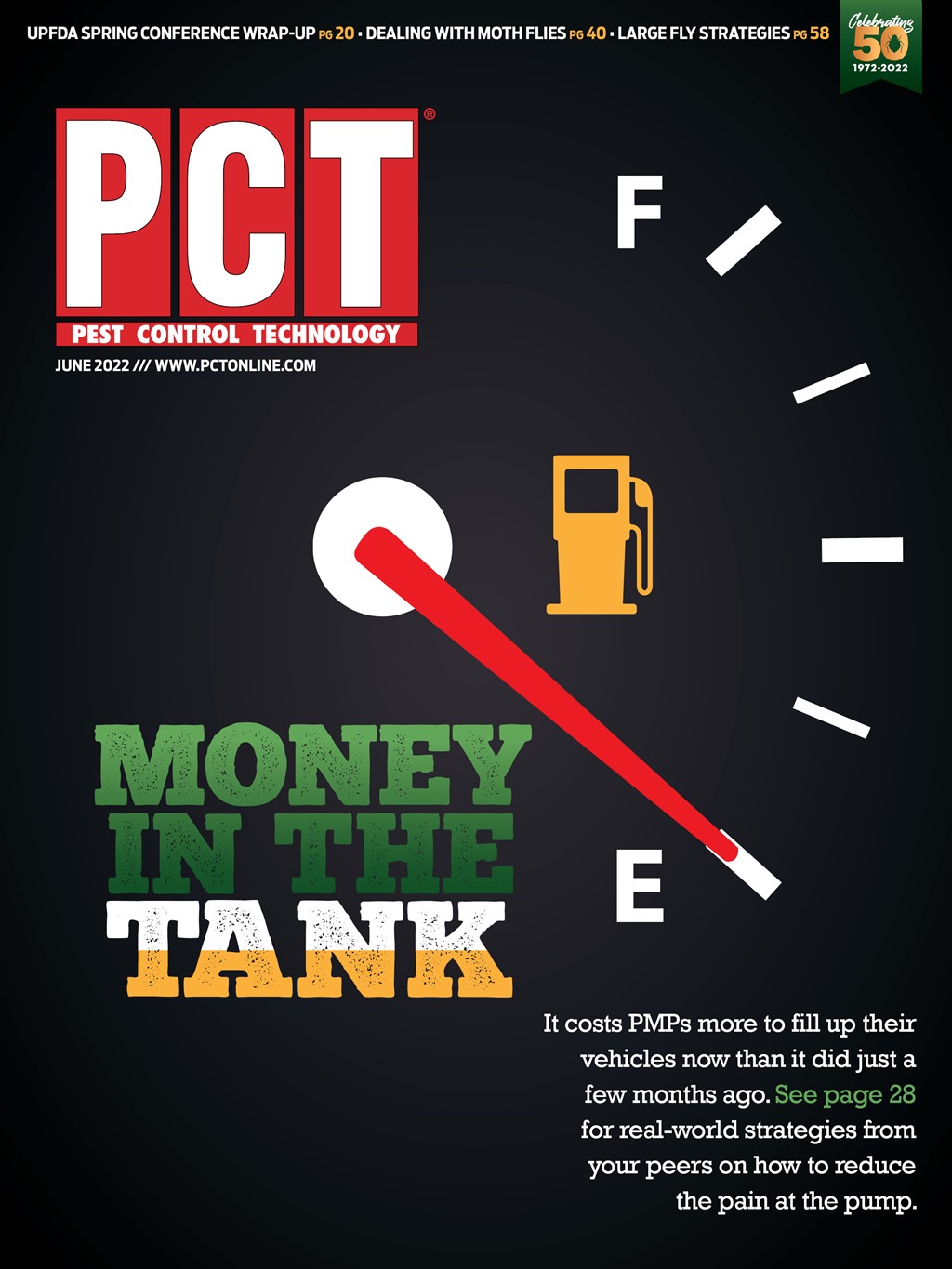
Recently, there has been an increase in the number of fungus-feeding beetles infesting homes, commercial buildings and different types of commodities. As early as 1988, a survey of state extension entomologists reported that a fungus-feeding beetle, the flat grain beetle, was one of the most serious pests of stored grain.
Fungus beetles are so called because they feed exclusively on the hyphae and spores of molds, mildews and other fungi growing in damp locations. Other arthropods, such as psocids, sowbugs, millipedes and mites, will live in damp areas and include fungus as part of their diets. One unique arthropod that lives in moist areas is the duff millipede. Duff millipedes are often found indoors near moisture sources and can be confused with carpet beetle larvae.
In contrast to these other arthropods, fungus beetles are resistant to desiccation and can live in dry conditions. This adaptation allows fungus beetles to survive during dry periods and move from one area to another.
True fungus beetles are members of the families Lathridiidae, Mycetophagidae and Cryptophagidae. Some members of the Tenebrionidae and Silvanidae families are also fungus feeders. Important members of these groups include the foreign grain beetle, plaster beetles, minute fungus beetles and the hairy fungus beetle.
Fungus beetles may be confused with other stored product beetles such as drugstore beetles, cigarette beetles and sawtooth grain beetles when viewed with the naked eye, but can be identified using a 10x to 20x magnifier.

SPECIES. Plaster beetles (Lathridiidae: Latridius spp.) include several species. The name originates from the fact that when walls within buildings were covered with wet plaster, these beetles often were found in large numbers feeding on the fungus growing on the curing plaster. Beetles in this group are small with an antennal club and a constricted thorax, which gives them a pear-like shape. Plaster beetles are often found associated with water leaks and wet pallets. Plaster beetles are strong fliers and are often found on window ledges.
Minute mold beetles (Cryptophagidae: Corticaria spp.) include several species of small oval beetles. Although they are similar in appearance to plaster beetles, they do not have the constricted thorax and thus have a more oval shape. Minute mold beetles are found in a wide variety of situations where fungus is present.
Foreign grain beetles (Silvanidae: Ahasverus advena) are closely related to the sawtooth and merchant grain beetles. However, these small, flattened beetles do not have the tooth-like projections on the margins of the thorax, but rather have single projections on the four corners of the thorax. These beetles can be confused with members of the Cucujidae such as the flat and rusty grain beetle. Foreign grain beetles are commonly found around the hatches of rail hopper cars where flour or grain has spilled. These beetles are strong fliers and are readily captured in light traps.
The hairy fungus beetle (Mycetophagidae: Typhaea stercorea) are small oval beetles that can be confused with drugstore and cigarette beetles. They can be distinguished by the antennal club and a more “hairy” appearance. Hairy fungus beetles are found in a wide variety of habitats. They are strong fliers.
HABITAT. Fungus beetles can be found wherever fungus is present. Wet pallets that are brought into a warm building are a common source of infestation. Situations where commodities are shipped in sea containers, where condensation occurs and drips onto the commodity, often result in a fungus beetle infestation. Infestations have been encountered in warehouses where water dripping from roof leaks has wetted stored commodities, resulting in an infestation. In fact, I have encountered infestations resulting from mold growing on the structural elements of leaking roofs. Dried mushrooms are often found infested by fungus beetles.
CONTROL. Because all of these beetles are attracted to light, insect light traps are effective in detecting their presence. Fungus beetles are best controlled by drying out the infested area and discarding infested food products. Drying pallets or switching to plastic pallets can prevent infestation. Heat treatments and fumigations have been used in cases of severe infestations. Heat treatments have the advantage of both killing the beetles as well as drying the moisture and eliminating fungus. Pesticide applications are rarely needed with these insects, although in heavy infestations, ULV treatments with pyrethrin materials can reduce levels of adults.

Explore the June 2022 Issue
Check out more from this issue and find you next story to read.
Latest from Pest Control Technology
- Orkin Helps Local Youth Sports Program Design a ‘Killah’ New Logo
- ABC Home & Commercial Services Celebrates 75 Years in Business
- NPMA Academy Announces Full Schedule
- Truly Nolen Promotes Marchello, Christopherson and Bolton to Managerial Positions
- TruGreen Announces 2024 List of Top 20 U.S. Buggiest Cities
- Why PMPs Use Rodent Bait Stations
- NPMA’s Women’s Forum Encouraged Female Leadership, Growth Opportunities in Pest Control
- GoPest Expands to Birmingham and Huntsville (Ala.)





